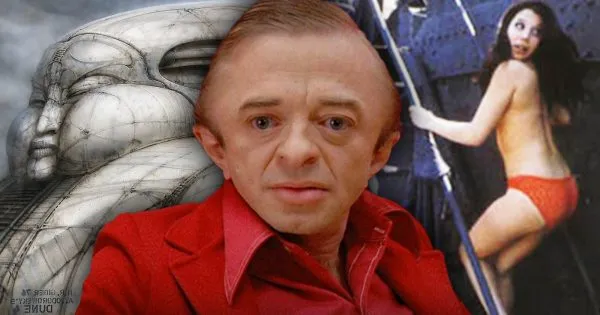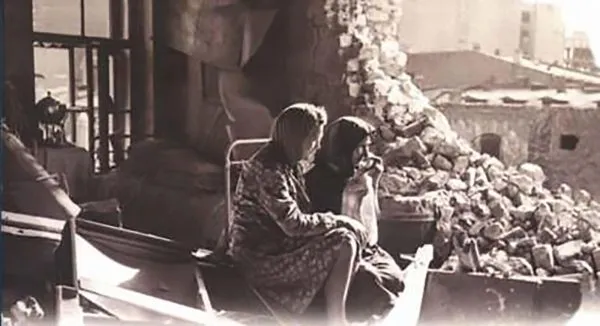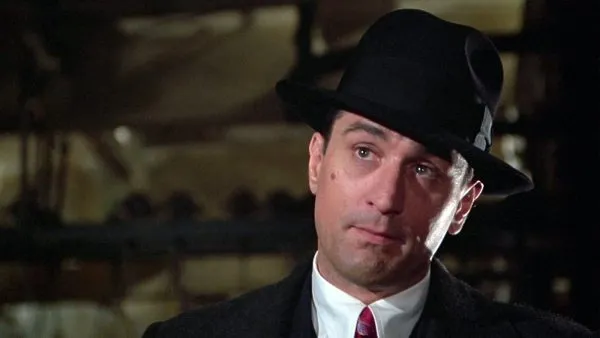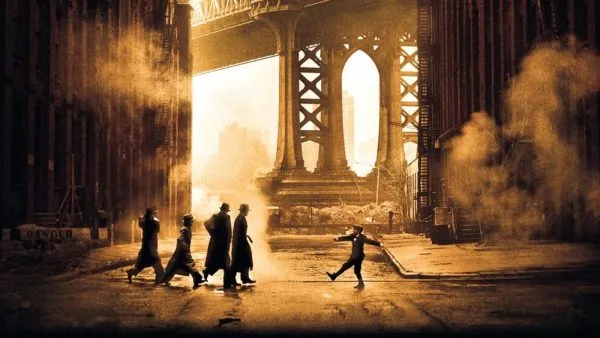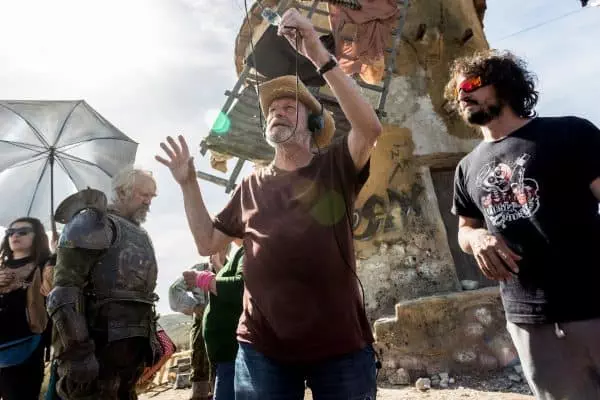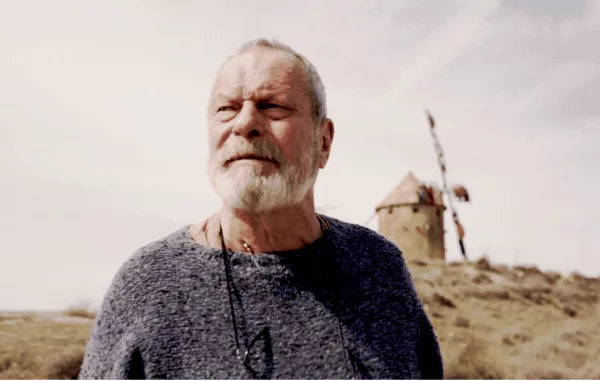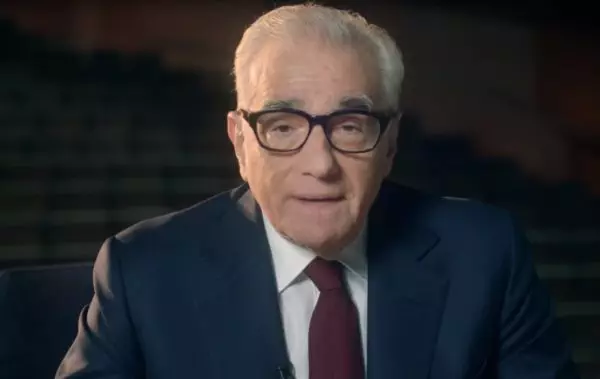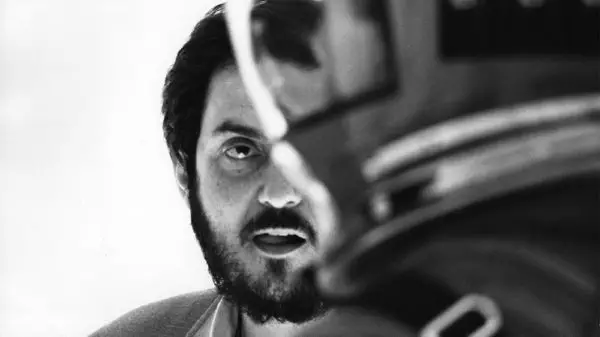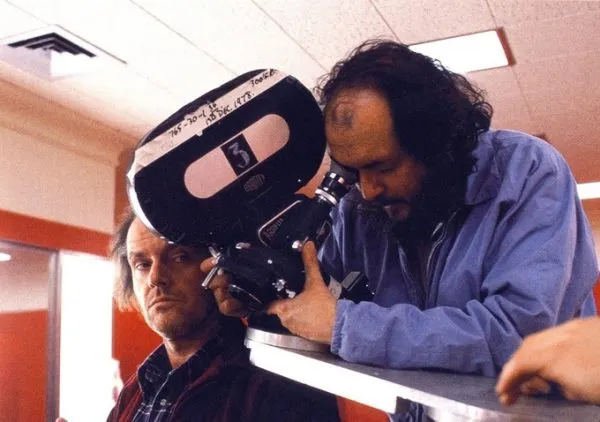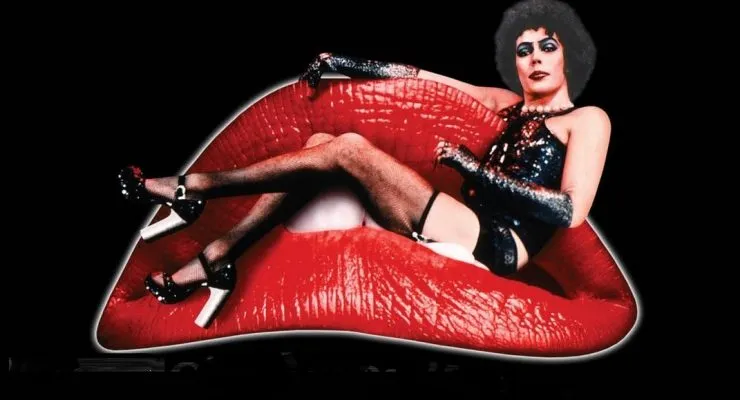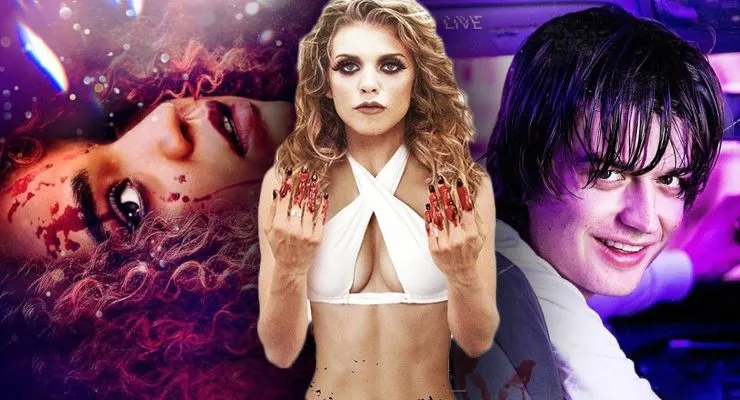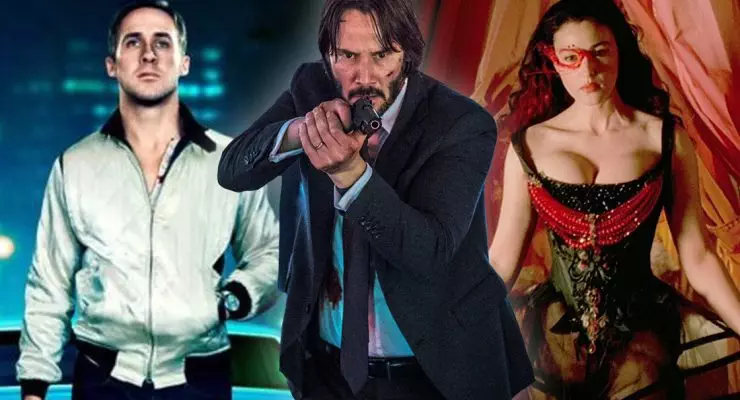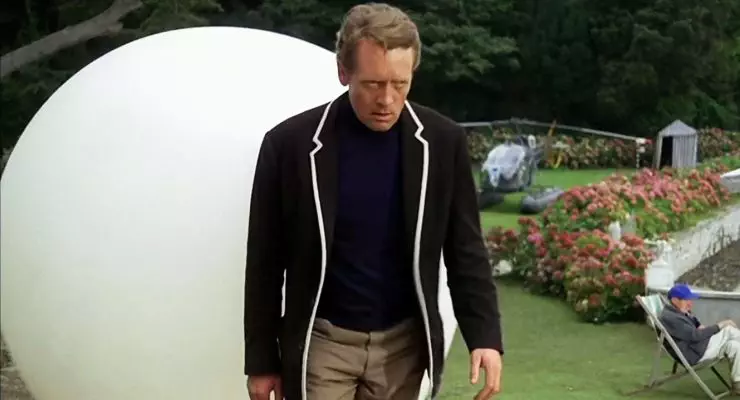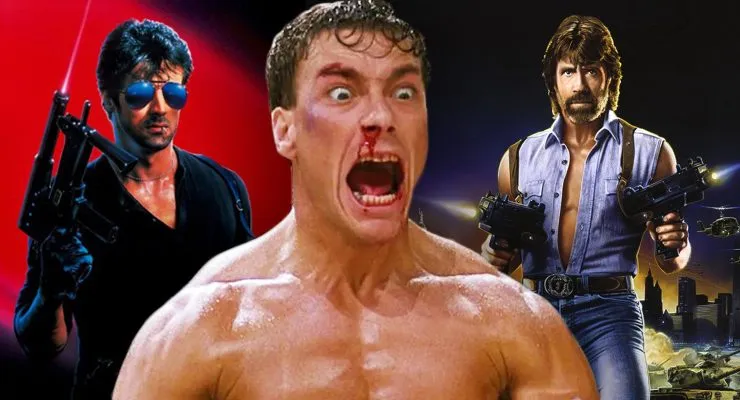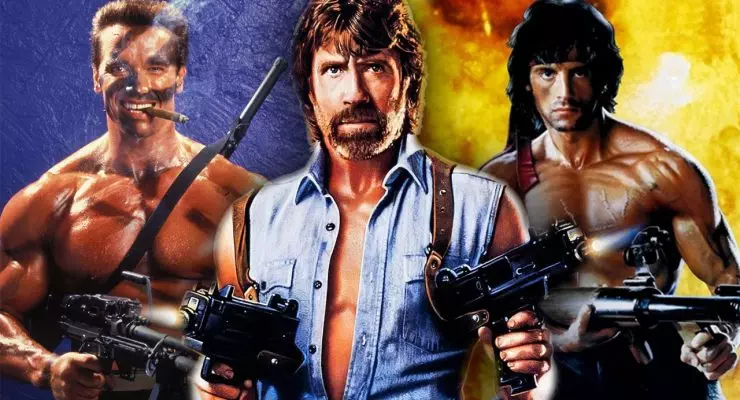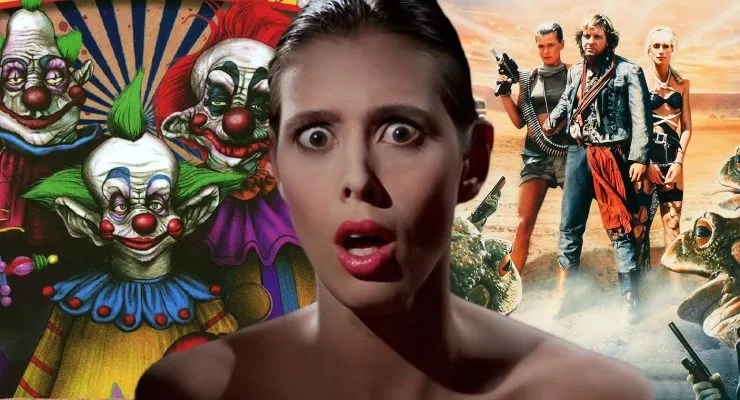Simon Thompson looks at the story behind ten great unmade films…
“What if…?” scenarios are something which truly gnaw at the human psyche, in almost every context. Socially, romantically, and professionally human beings constantly mull over things that they didn’t do or say, and how they would play it if they had a second chance at the same scenario. It’s why A Christmas Carol or It’s a Wonderful Life are such beloved and timeless stories because they tap into that side of the human mind in many different ways.
When it comes to movie-buffs however, many can spend hours on the internet or in a bar debating and mulling over the works by their favourite directors that for one reason or another just couldn’t get made. This list will cover ten of the most tantalising unmade masterpieces…
Sergio Leone’s Leningrad: The 900 Days (circa 1980s)
Sergio Leone is both the director of my favourite movie (Once Upon a Time In America), and, by extension, a serious candidate for my favourite filmmaker of all time. Leone is forever enshrined in cinema history for his re-invention of the western, with the legendary Clint Eastwood star making Dollars Trilogy (1964-1966), as well as his sweeping epic Once Upon a Time In the West (1968), and his criminally underrated Zapata western Duck You Sucker (1972).
Despite Leone’s indelible, pioneering, contributions both stylistically, through his use of close ups juxtaposed by sweeping long shots, and his helping to create the western anti-hero template so many others have built upon, his filmography is surprisingly sparse. This is because from 1972-1984 Leone dedicated his time and effort into the creation of his Proustian gangster epic Once Upon a Time In America, a film which many (including me) consider to be both his magnum opus but also eventually the project which did him in.
After the twelve year saga of realising Once Upon a Time in America came to an end in the mid-1980s, Leone immediately earmarked the next movie he wanted to make, an adaptation of Harrison Salisbury’s nonfiction account of the siege of Leningrad during World War II, which he read in 1982. Leone wanted to combine the basic elements of Salisbury’s book with an added romantic element à la Gone With the Wind, the filmmaker’s favourite novel and another white whale in his career.
The basic plot would have followed an American newsreel cameraman on assignment in Leningrad who becomes trapped in the city during the siege by the German Luftwaffe. The cameraman falls in love with a beautiful Russian girl, with whom he eventually starts a relationship and impregnates. Since relationships with foreigners were completely forbidden in the Soviet Union, the photographer and the girl in question are trying to survive both one of the most brutal siege campaigns in the history of warfare and the secret police at the same time.
Pre-production on the film began in the late 1980s, with Leone enlisting his close friends and go-to collaborators Ennio Morricone and Tonino Delli Colli to oversee the music and cinematography, and informally selecting Robert De Niro, who he’d just finished working with on Once Upon a Time in America, to play the lead.
Three factors cruelly clashed together to prevent Leone’s epic from seeing the light of the day. The first was that getting a totalitarian, ultra secretive state like the USSR to allow you to make a movie there was a bit of a tall order to put it mildly, moreover, as Soviet leadership passed down from Brezhnev, Andropov, and Chernenko to the Gorbachev era, none of them wanted a foreign filmmaker to portray realistically the unimaginably horrific disease and starvation that the Russian people suffered during the siege.
However, through Leone’s insistence that his work would show the heroism and determination of the Russian people, he was able to strike up a co-financing deal between Sov Film and Italy’s RAI.
The second was that the film’s budget and logistics were rapidly spiralling out of control. Leone initially quoted a $30 million budget, but given the sheer amount of extras, tanks, and costumes the budget was projected to swell to three times as much as Leone’s initial projection.
The third was that by this point in his life Leone’s precarious health had taken a turn for the worse. The mammoth production of Once Upon a Time in America had practically destroyed his heart due to a combination of his weight problems and exhaustion, and his fighting with Warner over their butchering of the American release of the film hadn’t exactly alleviated concerns over Leone’s physical wellbeing.
For the opening shot alone, in typical Leone fashion, he wanted the audience at first to see Shostakovich’s fingers playing the piano, which would then, by means of the camera swooping back through the window, becoming a tracking shot of Russian snipers in hiding. In the same uninterrupted shot, the camera would then move across a steppe where the audience would see a horde of German tanks, with the first shell being fired triggering the first cut of the film.
This image alone demonstrates the sheer scale of ambition Leone had for the project. As pre-production rolled on Leone desperately juggled as many plates as possible to gain financing from multiple sources. Sadly, in 1989, two days before a meeting in Los Angeles to achieve this goal, Leone died at the age of 60 from a heart attack, leaving Leningrad to perish with him.
Jodorowsky’s Dune and Clair Noto’s The Tourist (circa mid 1970s-1980s)
I’ve grouped these two entries together, because although Chilean filmmaker, comic book writer, and all around shaman Alejandro Jodorowsky and the feted, yet ultimately betrayed, screenwriter Clair Noto couldn’t be any more different as filmmakers they both have one particularly unfortunate thing in common. Their names are both tied to two of the most speculated about and influential yet unproduced science fiction films ever, Jodorowsky’s Dune and The Tourist.
Beginning with Jodorowsky, the young Chilean director had made a name for himself as a maverick cult filmmaker whose works El Topo (1970) and The Holy Mountain (1973) had become midnight movie staples with numerous celebrity admirers, including none other than John Lennon. In 1974 Jodorowsky came into contact with science fiction’s most feted and acclaimed novel, Frank Herbert’s Dune, a work which numerous filmmakers and producers across Hollywood had long wanted to adapt to the screen.
Jordwrosky immediately fell in love with Herbert’s galactic space opera, especially appreciating the hallucinatory aspect that the spice Melange, a key plot point of the story, brought to the narrative. After reading the book in one sitting during a trip to New York City, Jodorowsky excitedly rang French film producer Michel Seydoux at 6am and urged him to buy the rights to Herbert’s book. Seydoux, immediately sensing the project’s ability to capture the public imagination, acquired the rights as soon as he could.
From that point on Jodorowsky decided to assemble the greatest collection of talent a single film could possibly have. To supervise the film’s extensive special effects Jodorowsky recruited Dan O’Bannon, who was finishing making a cult favourite sci-fi film with his college friend, a little known director called John Carpenter, named Dark Star. In charge of storyboards was none other than demi-god French illustrator Jean Giraud, aka Moebius.
Not content with having only two of the most influential minds in the history of science fiction on board, Jodorowsky then reached out to Swiss artist H.R. Giger to design the look of the Planet Harkonnen, home of the story’s antagonists. Finally, British illustrator Chris Foss whose work illustrating Isaac Asimov novel covers had been winning him acclaim, was drafted to design the various spaceships.
The casting was also to be no less ambitious, with Jodorowsky wanting the likes of Orson Welles, David Carradine, Charlotte Rampling, Mick Jagger, and Salvador Dali to play parts. The score was to be provided by a collaboration between French rock band Magma and Pink Floyd, with the extent of the latter’s actual involvement with the project being sketchy at best.
With the special effects that Jodorowsky wanted to dwarf even those of Kubrick’s 2001, a group of highly priced actors, including Dali, who was constantly re-negotiating his salary at the drop of a hat, and finally a script that would have run just under fourteen hours, the budget skyrocketed to over $2 million ($11,240,738.14 in 2025) so every prospective American distributor understandably got cold feet and refused to pick it up.
When the project died however, various directors such as George Lucas and Ridley Scott took cues from its planned special effects for their own work. Moebius and Dan O’Bannon went on to create a short comic, The Long Tomorrow, a foundational text of cyberpunk and the main inspiration for Blade Runner/Neuromancer, and Dan O’Bannon also wrote the masterpiece which is Alien, with HR Giger’s creature design for that project bringing him international household fame. Finally Jodowrosky would team up with Moebius once more to create one of the most influential European comics of all time, The Incal.
Even though Jodorowsky failed to make Dune, the failed project still helped to create the modern science fiction landscape that we have today. Not exactly bad for a film we will never get to see.
Clair Noto’s The Tourist, on the other hand, represents the other side of the coin in terms of being a script which, despite never seeing the light of day, has had countless plot and stylistic elements pilfered from it by other directors. After gaining some notoriety for writing several issues of Red Sonja in the 1970s, a young screenwriter named Clair Noto penned a script taking cues from both The Day The Earth Stood Still and European new-wave cinema such as the works of Fellini, Fassbinder, and Antonioni.
The script, titled The Tourist, focuses on a beautiful businesswoman in her thirties living in New York City, called Grace. While ostensibly appearing human, Grace is in fact an alien, whose species has been exiled to Earth and has had to put on a human disguise to assimilate into society. Grace and others like her spend their evenings in a kind of sex dungeon called The Corridor, where they can shed their human forms. Desperate to return to her home planet Grace finds out about a shadowy figure named John Taiga, who is rumoured to have constructed a ship to leave Earth.
Part Hitchcockian thriller and part science fiction, The Tourist was such a disarmingly original script that it was picked up by Universal in the early 1980s. Friction arose between Noto and studio head Sean Daniels, as Daniels demanded constant re-writes – to the extent that Noto was sending him fifty pages at any given time for him to edit. Eventually Daniels became preoccupied with various other projects, handing over his role to another producer named Renee Missell. Noto and Missell clashed constantly, and after enlisting English director Brian Gibson, Missell kicked Noto off the project.
Missell went as far as both belittling the script every chance she got and hiring Alien scribe Dan O’Bannon to provide revisions. Missell didn’t want to go back to the original draft, because that meant Noto would receive a screenwriter’s credit, so she went about changing characters’ names and the film’s setting from New York to San Francisco to antagonise Noto as much as possible.
Eventually Gibson, who wanted the project to reflect the darker existentialist nightmare of the original script more than Universal did, was also kicked off the project and The Tourist was put into turnaround, a process in Hollywood which means that a script is frozen in place for another studio to come along and buy it. Just before it was placed into turnaround however, Missell tried for one last time to get it off the ground through talks with Ridley Scott, who was growing frustrated with pre-production on Blade Runner.
Under the cover of night Noto handed her draft over to an agent who was working for Francis Ford Coppola’s burgeoning studio American Zoetrope, which put her in contact with British director Franc Rodham (best known for Quadrophenia). Rodham and Noto’s artistic sensibilities were far more aligned, and the duo even got as far ahead as bringing in HR Giger to design the creature effects, and having a meeting with German actress Hanna Schygulla about possibly playing Clare.
The problem was that Zoetrope was going bankrupt due to Coppola’s disastrous musical One from the Heart and the studio no longer had the money to make any of its proposed projects into fully fledged releases. After the attempt at Zoetrope went belly up, Noto tried numerous other avenues to make The Tourist, coming closest in 1997 but to no avail.
The problems that The Tourist had as a script were that structurally it didn’t conform to a typical Hollywood template as a Robert Mckee type would have it. Its narrative doesn’t contain a single traditionally likeable character, and its sensibilities are both far too dark, European, and sexual for American audiences to handle. Although downbeat American science fiction such as Blade Runner, The Thing, RoboCop, and Terminator all existed with varying degrees of commercial success – Noto’s vision would have been so out of place amongst a cinematic landscape of E.T. and Starman that it would have stuck out like a sore thumb.
Noto later regretted not making it a European production with a director like Paul Verhoeven in charge, but sadly the script required extensive effects that only Hollywood money could ever really provide. Like Jodorowsky’s Dune, so many directors from Ridley Scott to Jonathon Glazer have taken chunks of The Tourist for their similarly themed works that trying to make it today would lessen its original groundbreaking impact.
Noto’s script, however, is available online and it makes a fascinating fork in the road style read, in the sense that American science fiction would a be a totally different place if The Tourist had been made in the early 1980s. All we can hope now is that someone picks it up and turns it into a comic book or animated film. Regarding the whole debacle, this quote by Noto herself truly says it all : “The Tourist has always had incredible supporters and incredible detractors. Right from the beginning it aroused strong feelings one way or another. People were either taken by it or felt it was the Antichrist. I still don’t, to this day, really comprehend what all the fuss was about.”
Terry Gilliam’s The Defective Detective (circa 1990s)
Terry Gilliam is a filmmaker who has found himself lurching in and out of Hollywood’s good graces for a long time. Like Stanley Kubrick before him, Gilliam’s list of incomplete projects far outweigh his completed works, to the extent that I could simply dedicate an entire list to unmade Terry Gilliam movies. Even with one of the more tantalising unmade films list of any director, a fantasy noir Gilliam has long wanted to make, called The Defective Detective, truly stands out.
Gilliam was experiencing something of a brief welcoming back in Hollywood during the 1990s, thanks to the success of both The Fisher King (1991) and 12 Monkeys (1995), after the unjust box office failures of Brazil (1985) and The Adventures of Baron Munchausen (1988) had made Gilliam a pariah in the mid-late 1980s. With a new- found level of clout within the industry, Gilliam earmarked his original script (co-written by Richard LaGravanese), The Defective Detective, as his next movie.
The plot of the film meshes both the fantasy and film noir genres, and focuses on a cynical, burnt out Chandlerian New York police detective in search of a missing little girl. The detective discovers that the child has ended up in an elaborate fantasy land, sending him on a grand journey that gives him a new perspective on life.
At various points of the 1990s the movie always seemed to be one step closer to being made, with the likes of Nick Nolte, Bruce Willis, and Nicolas Cage all being attached to play the title role. Heavyweight supporting cast members such as Sean Connery, Danny DeVito, and Cameron Diaz were also all rumoured to be involved with The Defective Detective at various stages.
The problem the movie had in getting made was that big studios didn’t want to finance a special effects-heavy, dark, adult fantasy epic, consistently refusing to fund Gilliam due to concerns about the movie’s commercial viability. Thematically The Defective Detective would have been nothing less than pure Gilliam, as drafts of the script available online show its themes of fantasy vs reality, the oppressive nature of modern life and the need to escape, and a typically Gilliam darkly cynical tone.
Of all the movies on this list however, this one stands a pretty good chance of actually seeing the light of day. Gilliam still has a great zest for directing and life in general, and there have been rumoured plans that he and LaGravenese are re-developing it for streaming. Given that this idea combines three of my favourite things in noir, fantasy, and Terry Gilliam, this is a film I’m currently trying to bid for a Monkey’s paw on eBay in pursuit of it being made.
William Friedkin’s Night Train (circa late 1990s)
William Friedkin was a director who pulled no punches whatsoever, so it was no wonder he was so attracted to making a biopic about one of the greatest heavyweight boxers and also one of the sport’s most notorious characters, Sonny Liston. Sonny Liston’s life and career was both tragic and also so cartoonishly bizarre that if the man himself didn’t exist a Hollywood screenwriter would have invented him. Rather than focusing on Liston’s entire life from his dirt poor beginnings in Arkansas, Friedkin wanted the narrative to be squarely set in the years 1962-1965 when Liston both gained, and then subsequently lost, the Heavyweight Championship of the world, to a brash young up and comer by the name of Cassius Clay (later Muhammad Ali).
Conceived as the anti-Rocky, Friedkin wanted Night Train to be as tonally dark as possible, going as far as saying that it would be the edgiest film of his career, and, considering that this is the same guy who made Cruising, that is saying something. Although Friedkin had a star attached to play Sonny Liston in Ving Rhames (which is about as perfect a choice as you could get) and had enlisted Pulp Fiction cinematographer Andrezj Sekula, Friedkin could not find a major studio who wanted to take a chance on such a controversial and bleak story.
Eventually the project was abandoned as Friedkin was unable to secure any funding for pre-production. This is a terrible shame because from both the information about the project that is available, and the people involved themselves, it seems that Night Train had the potential to stand alongside Raging Bull and The Hurricane as one of the great boxing movies ever made.
Alfred Hitchcock’s Kaleidoscope (1964-1967)
In the mid-1960s Alfred Hitchcock was experiencing something of a career lull. From his early days in Britain during the silent and early sound era, to his peak years in Hollywood starting in 1940 and ending roughly in the 1960s, the man they called the master of suspense had always been on the cutting edge of filmmaking. After viewing both Fellini’s 8 ½ and Michelangelo Antonioni’s Blow Up, Hitchcock realised that he was miles behind the latest writing and editing techniques in European filmmaking and that he had to catch up as quickly as possible.
This catching up took shape in the form of a script with the title Kaleidoscope, a movie that would have been a far more explicit spiritual successor to Psycho (1960), if it was ever made. The story, taking cues from the real life murder cases of Neville Heath and John George Haigh, focuses on a young attractive bodybuilder who uses his looks and easy going charm to lure women to secure locations so that he can murder them. A snag is put in his plans, however, when the NYPD send an undercover police woman to pose as a potential victim, creating a classic Hitchcockian game of cat and mouse.
Hitchcock planned the narrative around three key murders, one by a waterfall, one on a mothballed warship, and one at a garishly coloured oil refinery. From the descriptions available it seems that these scenes were in keeping with Hitchcock’s natural ability to balance huge action set pieces and plot.
What made Kaleidoscope an even more daring outing even than Psycho, is that the audience would have seen the events of the movie through the killer’s eyes, a storytelling device which was practically unheard of in the suspense genre at the time. Even Francois Truffaut, a close friend and admirer of Hitchcock, when he saw the script, despite his admiration for Hitchcock’s vision, was uneasy about its graphic nature.
When Hitchcock pitched Kaleidoscope to Universal, the studio vetoed it due to the script’s relentless sex and violence, despite Hitchcock’s insistence that he could make the film at $1,000,000 maximum budget and with a cast of complete unknowns, although the likes of Robert Redford, David Hemmings, and Michael Caine were all feted as possible choices to play the lead.
Hitchcock even got as far as shooting test footage, which the BBC managed to recover for use in a 1999 TV documentary about the director, which gives us a fascinating look into what Kaleidoscope might have been.
Overall the project was far too ahead of its time and in a Hollywood where Bonnie and Clyde and the full incineration of The Hays Code hadn’t even happened yet, a film like Kaleidoscope would have been simply unthinkable for both financiers and audiences. Although history has proven Hitchcock completely right, he was simply a victim of having the right idea at the wrong time.
David Lynch’s Ronnie Rocket
Like Stanley Kubrick and Terry Gilliam, David Lynch was a director who despite his incredible vision, creativity, and influence over subsequent generations of directors had an extremely difficult time when it came to getting movies made. One particular albatross around Lynch’s neck that stood above the rest of his unrealised works was his intended thematic follow up to his debut Eraserhead, Ronnie Rocket.
After the release of Eraserhead into the midnight movie circuit, America’s most exciting cult filmmaker since the emergence of John Waters a few years earlier, began work on his intended sophomore effort, Ronnie Rocket.
In true Lynchian fashion, the plot of Ronnie Rocket was going to be completely and utterly bizarre, to an even larger extent than his debut Eraserhead. Ronnie Rocket tells two separate yet interconnecting stories, the first focuses on a noir style detective who is trying to enter a place known as the second dimension. The detective’s ability to stand on one leg aids him in the accomplishment of this goal. However he is stalked by a group of shadowy figures known as the Donut Men, who sadistically wield electricity as a weapon. The Donut Men hound the Detective through a series of surreal and intimidating rooms across a city where no one is allowed to leave. Eventually the Detective falls in love with a beautiful woman named Diana as he tries to survive and solve the mystery of the city.
The other plot centres on a dwarf named Ronald De Arte, who is being experimented on by two crazed Dr Frankensteinesque scientists named Dan and Bob, who are trying to make Ronald into something they term the average handsome man. Their patron, a kind of Gloria Swanson in Sunset Boulevard figure named Deborah, helps Dan and Bob install a power pack into Ronnie’s body, meaning that he has to plug himself into a socket every 15 minutes or he’ll lose energy. After coming across a rock band warming up, he’s plunged into a Marvel comics style freak accident that turns him into a superhuman rockstar, gaining him the nickname Ronnie Rocket and the affections of a tap dancer named Electra-Cute.
Overseeing this bizarre, industrial hellscape city setting, is a megalomaniacal overlord named Hank Bartells who controls both the Donut Men and the city’s power grid. Eventually both Ronnie and the Detective’s paths cross and they vow to help one another in toppling Hank Bartell’s reign of terror.
Thematically Ronnie Rocket’s themes are undiluted pure Lynch. Encompassing life in a huge oppressive industrial city, a satire of the nuclear family, bizarre yet likeable misfit characters, 1950s Americana, pitch black humour, and constant surreal and ambiguous imagery, Ronnie Rocket’s script stands as a monument to Lynch’s recurring obsessions that have appeared throughout his work time and time again.
Attempts to make Ronnie Rocket a reality came all the way back in the late 1970s when Lynch intended it to be the follow up to Eraserhead. First he pitched it to William Morris’ Endeavour, but after describing it as a story about “ electricity and a three foot guy with red hair” they never got back in touch with him. After meeting producer Stuart Cornfield he ended up making his second film The Elephant Man instead. After The Elephant Man came Dune, which also sidetracked him from Ronnie Rocket.
After the collapse of a potential home in Francis Ford Coppola’s Zoetrope Studios, Lynch would return to Ronnie Rocket in earnest in 1987 one year after completing his masterpiece Blue Velvet. Lynch first considered British child actor Dexter Fletcher for the title part but as Fletcher aged out, Lynch had a chance meeting with dwarf actor Michael J Anderson with whom he immediately hit it off.
Other Lynch regulars such as Brad Dourif, Dennis Hopper, Jack Nance, Isabella Rossellini, Harry Dean Stanton, Crispin Glover, and Dean Stockwell were all potentially involved with Ronnie Rocket at various points. Despite Lynch holding out hope of making the film well into the time he was making Mulholland Drive and Inland Empire, a combination of risk adverse financiers and the kind of industrial environments where Lynch shot Eraserhead being systematically erased proved to be mounting obstructions.
The cowardice of Hollywood’s money men sadly prevented a great filmmaker from completing his jumping off point from the harsh industrial imagery of his early work to the surreal dreamscapes which would come to define the second half of his career. Although Lynch is sadly gone, if Francois Schuiten wanted to create a comic book version of Ronnie Rocket using Lynch’s script for dialogue I wouldn’t complain in the slightest.
Martin Scorsese’s Gershwin (1980s-1990s)
Perennial candidate for greatest living filmmaker Martin Scorsese, is a director who isn’t afraid to make movies about outsized personalities and subjects. Scorsese has used his incredible talent to dramatise the lives of figures as widely different as Jesus Christ, the Dalai Lama, Jake LaMotta, Jordan Belfort, Henry Hill, William Cutting, Frank Sheeran, and Howard Hughes. However, one historical figure whose life hasn’t been rendered on screen by Scorsese is American composer George Gershwin, whose life and contributions to American culture have long fascinated him.
The use of music (as well as documentaries about musicians specifically) is an important part of understanding both Scorsese’s work and Scorsese the human being, with the director’s expert song choices for key scenes and montages being one of his most recognisable stylistic traits.
After finishing Taxi Driver in the mid-1970s, Scorsese went on a path of making musically orientated projects including the musical New York, New York (1977), a documentary about The Band entitled The Last Waltz (1978), and American Boy: A Profile of Steven Prince (1980). This could be seen as preparation for one of his biggest projects yet: Gershwin.
What particularly fascinated Scorsese and scriptwriter/frequent collaborator Paul Schrader about George Gershwin was his reclusive nature and the fact that despite being so beloved, famous, and respected, the public never actually knew much about his personal life. Scorsese and Schrader’s plans were to divide the script into nine separate chapters each focusing on part of Gershwin’s life. Most of these chapters were to be shot in black and white, until the last section of each individual chapter which would conclude with a colourful song and dance number.
Both Robert De Niro and Richard Dreyfuss were slated to star, but as the project gained momentum, Scorsese and Schrader began to fall out over another script they were working on together, a remake of Vincente Minelli’s The Bad And Beautiful. This disagreement unfortunately forced the pair to abandon the movie entirely.
Scorsese would attempt to make Gershwin again in the early 1990s after the success of both Goodfellas and Cape Fear, with Six Degrees of Separation screenwriter John Guare, but Warner Bros. simply weren’t interested, with the studio wanting Scorsese, ironically, to produce another infamous unmade project, a biopic of Dean Martin.
There is a rumour, as of 2021, however, that Scorsese is redeveloping Gershwin once again, and like the arduous process of wanting to make The Aviator decades before, which he actually managed to, hopefully with Gershwin he can replicate that streak of good luck.
A Confederacy of Dunces, various, (1980s-)
John Kennedy Toole’s southern gothic, picaresque comedy A Confederacy of Dunces is my favourite book of all time. Set in New Orleans, A Confederacy of Dunces tells the story of an obese, slovenly, flatulent, yet highly educated medievalist, Ignatius J Riley. Ignatius is given an ultimatum by his long suffering mother forcing him into either getting a job or being kicked out of the family home, with the equally eccentric characters that Ignatius meets along the way gaining their own point of view chapters as well.
Since its posthumous publication in 1980, after Toole committed suicide twelve years earlier at the heartbreakingly young age of 31, when his manuscript had been rejected by every major publisher going, the book has been constantly heralded as one of the funniest American novels of all time, and has never been out of print. With the richness of Toole’s characters and almost cinematically detailed depiction of New Orleans, the book was immediately seen as a potential project to be adapted. However, in a twist of fate stranger than fiction, an adaptation of this modern classic is now seen as a cursed endeavour.
In the early 1980s Harold Ramis tried to mount a version starring John Belushi as Ignatius, but Belushi’s tragic death due to a drug overdose forced Ramis to abandon the project. In the late 1980s the perfect filmmaker for Toole’s novel, John Waters, expressed interest in directing a film version with his muse Divine as Ignatius in what would have been Divine’s first role out of drag. But like Ramis before him, the death of his potential lead also forced Waters to abandon his version.
In the 1990s both John Candy and Chris Farley were attached at various points to play Ignatius, yet these adaptations also ended up being abandoned due to their respective deaths, giving the project and the role of Ignatius a cursed aspect. In 1997 British comedy writer Stephen Fry went on a research trip to New Orleans to prep for yet another failed attempt at an adaptation, and John Goodman around this time was also linked with playing Ignatius.
In the mid-2000s however, a Steven Soderbergh written, David Gordon Green directed, version was gaining serious momentum with Will Ferrell in the lead as Ignatius, and a supporting cast including Natasha Lyonne, Paul Rudd, Alan Cumming, Mos Def, Kristen Johnson, and Jesse Eisenberg.
The cast had a table read at the 8th Nantucket Film Festival, but due to both the combined effects of its potential studio Paramount losing interest, the murder of Helen Hill, who was the head of the Louisiana Film Commission, and the devastating effects of Hurricane Katrina upon the city of New Orleans, killed any momentum the production had left.
Soderbergh went on to label the project as “cursed” and having “bad mojo to it”. Since Soderbergh’s version James Bobin was set to direct an adaptation in the early 2010s with Zach Galifianakis as Ignatius – and that’s been the last rumoured production in the bizarre dark comedy of errors that has been A Confederacy of Dunces’ screen adaptation.
Ridley Scott’s Blood Meridian (mid 2000s)
Like the previously discussed A Confederacy of Dunces, Cormac McCarthy’s epic revisionist western Blood Meridian has been a coveted adaptation project for many a director since its initial publication in 1985, with Ridley Scott being one of the more prominent names on the list of directors who have attempted to bring McCarthy’s apocalyptic despondent vision to the big screen.
Blood Meridian tells the story of the Kid, a young runaway from East Tennessee, who leaves for the Southwestern United States and ends up joining the murderous Glanton Gang, a group of scalp hunters whose real life exploits of massacring the local Indian population for money and sadistic pleasure have been well documented. As the Kid, becomes more and more a part of the Glantons he comes into contact with the monstrous Judge Holden, a 7 foot tall, completely hairless, albino who without going into specifics is one of the most chilling characters you will encounter in any book.
McCarthy’s novel immediately captivated Scott, with the director seeing Blood Meridian’s cinematic potential, he commissioned William Monahan produce a script that he’d describe as “double X horrific”. Scott entered into lengthy and extended talks with Paramount and super-producer Scott Rudin, but due to the novel’s violent content, oblique and ambiguous narrative, and complete lack of any real hero or sympathetic character these talks stalled.
By 2008, both Scott and Monahan left Blood Meridian due to their meetings with Paramount collapsing. Blood Meridian itself however, is slated to be adapted by director John Hillcoat, and if it’s anything near as good as his adaptation of another one of McCarthy’s bleak masterworks The Road, then the movie will be truly astonishing.
Stanley Kubrick’s Napoleon (late 1960s-early 1970s)
Despite the fact that Stanley Kubrick had a five decade career, the director’s intensely methodical and perfectionistic nature hindered him from making more movies than he actually did, finishing his career with just thirteen completed films. That isn’t to say that Kubrick wasn’t constantly developing new ideas however, as even a cursory glance at his extensive unmade works list shows. Among Kubrick’s most infamous unmade films, one stands above the rest, a biopic of Corsican military leader Napoleon Bonaparte, simply titled Napoleon.
After the success of 2001: A Space Odyssey, Kubrick effectively had a blank cheque to make a movie about anything that he wanted, and what he wanted above all was to bring the life of Napoleon to the big screen. Kubrick fervently believed that nobody had ever made a definitive movie about Napoleon, with both Abel Gance’s 1927 silent epic and a five part Soviet movie adaptation of Tolstoy’s War and Peace both disappointing him.
Kubrick threw himself into research about both Napoleon and the period itself, devouring every book he could find on the subject, which informed the initial screenplay he wrote. Kubrick and his small army of assistants created a database of cards detailing the activities of both Napoleon and his inner circle, scouted various filming locations in France and Romania and had planned to use the same technology from the ape sequence at the beginning of 2001 to recreate Versailles.
The epic battle scenes, which Kubrick would refer to as “ violent ballets” were to be filmed in Romania with the Romanian People’s Army committing 40,000 soldiers and 10,000 cavalrymen to appear as extras. Paper costumes were also to be used as a cost effective method of providing accurate period attire. Both David Hemmings, and later, Jack Nicholson were touted to play the title role, with Audrey Hepburn being Kubrick’s preferred choice to play Josephine.
Kubrick promised his financial backers that he would do everything in his power to create the definitive cinematic treatment of Napoleon, but the mounting costs of location filming, numerous extras, and weaponry, were giving his creditors sleepless nights. Due to both the wider western release of Sergei Bondarchuk’s War and Peace adaptation as well as the commercial flop of another Bondarchuk Napoleonic production, Waterloo, Kubrick’s dream project was cancelled in the early 1970s.
Although the bulk of Kubrick’s research for Napoleon would end up in his 1975 film Barry Lyndon, set over a decade before the Napoleonic era, Kubrick always held out hope that at some point he could resurrect the project, before his death in 1999. While there has been talk of an HBO mini-series based on Kubrick’s research and script helmed by Steven Spielberg, without Kubrick’s idiosyncratic auteur vision and unique feeling of a kindred spiritual connection with his subject matter, Napoleon simply won’t be the same experience with a different director.
What unmade movies do you think had the potential to have become masterpieces? Let us know on our social channels @FlickeringMyth…
Simon Thompson
